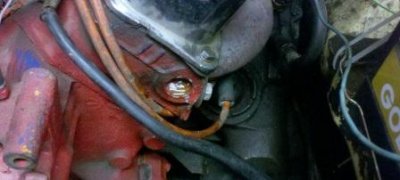1967_Joe
Well-Known Member
Just bought a 1967 Belvedere ii (My Wife calls it Bertha). I plan on pulling the engine but wanted to play around with her first. Its a 1970 383 engine and I noticed the plug under the valve cover (see pic) is leaking. Is this just an easy pop off/on? Assuming a ton of rust behind the plug(s).

















